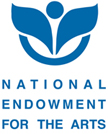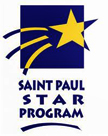Reverse Appliqué |
|---|
 |
R21: This is a reverse appliqué piece cut from a white cloth and folded into quadrants to make the piece symmetrical. The reverse appliqué cucumber seed motif is sewn onto hemp cloth. Due to repetition in the pattern, the cucumber seeds look like flower petals. The L shape motifs involve simple quadrant corners. The repetition of blue and pink dotted lines represents yu choy flowers, but the pink and blue stitches on the cucumber seeds motifs are for decoration only. This type of paj ntaub was made specifically to sell to tourists.
|
Back to Top |
 |
R22: This piece is done with appliqué technique, imitating the form of reverse appliqué. Each motif of hearts and single steps is sewn onto a colorful batik background. Each heart has a
Sold by Khoua Yang, 2005, 38x37 cm |
Back to Top |
 |
R23: This piece involves reverse appliqué in a geometric design. The purple cloth was folded, cut, and handsewn onto the gray cotton background. The motif depicted is a spiral, and is somewhat similar to a snail motif. The spiral designs have leading lines, which create the illusion of diamond shapes. The frames were created using appliqué.
By Phia Lao, 1983, 18x18 cm |
Back to Top |
R24: This piece displays a maze motif in a non-traditional manner. It is probably a commercial work, made specifically for an individual. Although it appears to involve reverse appliqué, it actually was created using appliqué techniques. Each appliqué line was cut and sewn onto the black background cloth, creating the illusion of diamonds.
|
Back to Top |
 |
R25: This piece was created using both appliqué and reverse appliqué. The maroon square was cut into a spiral to produce this chev motif, and sewn onto a gray background as appliqué. The chev motif is half of a snail motif. The Hmong people called it lub qwj yeeg (snail). Some people interpreted as the circle of life. It has a start and it has an end.
|
Back to Top |
 |
R26: The methods used in this artwork include appliqué and reverse appliqué. The pink hemp cloth was cut into a chev motif centered on an incomplete snail motif, and stitched with plain blanket embroidery onto a black monk’s cloth.
|
Back to Top |
 |
R27: The methods and techniques used for this paj ntaub are both appliqué and reverse appliqué. There are four incomplete snail motifs which resemble spiral designs. Each reverse appliqué is cut and sewn as appliqué onto a hemp background. The Night Market in Luang Prabang, Laos, abounds in clothing, pillowcases, duvet covers, wall hangings, and other products for tourists, using this and the two figures motifs. Sometimes it is also called the Lao number one, which, although only a simple swirl, it resembles.
|
Back to Top |
 |
R28: The colors used in this paj ntaub piece are black, purple, red, gray, and white. It is both appliqué and reverse appliqué, with the lines individually cut and sewn onto the background. The motifs are incomplete snails, which resemble spiral designs and the Lao number one. The black is used as a border in this item found in many color combinations and sold at the Night Market in Luang Prabang, Laos.
By Lao Mee Yang, Laos, 2005, 44x41 cm |
Back to Top |
R29: The main motif featured in this reverse appliqué is unidentifiable. It was probably influenced by a Chinese or European maze motif. The motifs at the corners depict inverted ram’s horns. Flower emblements were used as decorations on this paj ntaub.
|
Back to Top |
 |
R30: As seen on this tapestry, there are two figures, typically cut from joss paper and used in traditional shaman rituals to represents souls. However, these figures are cut from cotton cloth and sewn as reverse appliqué. Sometimes shaman will advise their patients to stitch these figures on the back of a jacket or shirt and use them as amulets to ward off bad spirits. These figures, however, are common in the Night Market in Luang Prabang, Laos, where they appear in many color combinations to decorate pillowcases, duvet covers, wall hangings, and many other items for the tourist trade.
|
Back to Top |
Page 1 << Page 2 << Page 3 |



